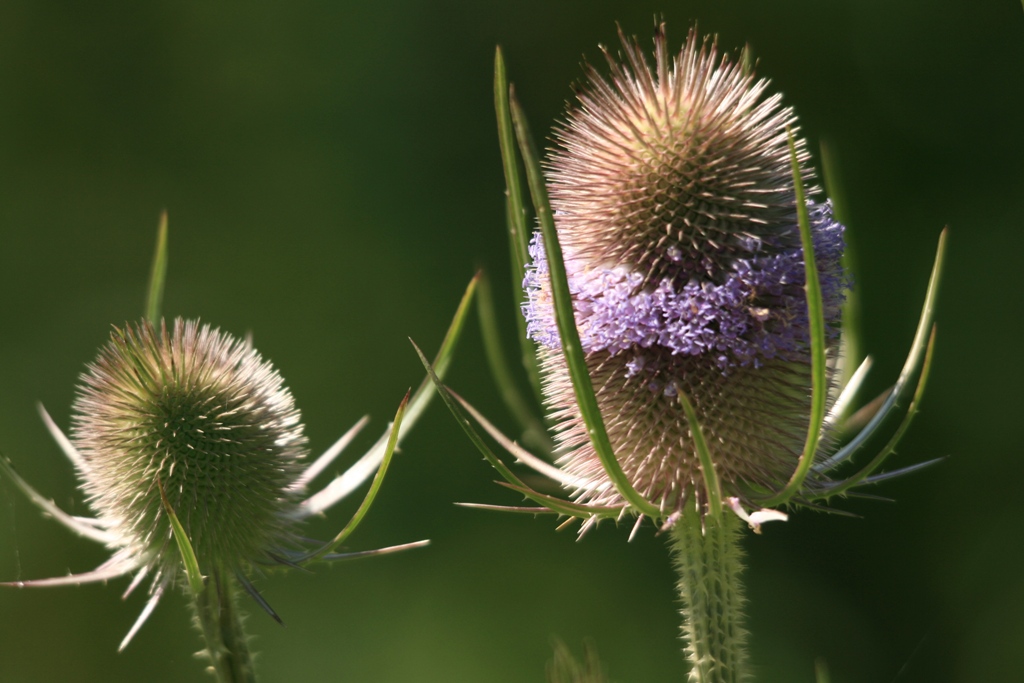
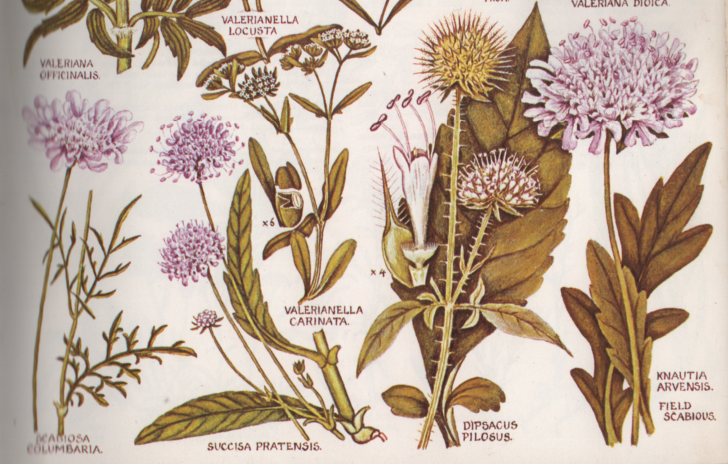
The Teasel family or Dipsacaceae came to my attention again now we are nearing Christmas time and I am hunting around for attractive seedheads to utilize in the yearly Christmas wreaths we are making.
There are many proud stems left in our Bee Garden at my allotment but I had to remove several which were dropping accross the pathways, which won’t go to waste!
I learned from Stace that this family has now moved to be family 140, situated in between the Valerianaceae before and the Griseliniaceae & Pittosporaceae after. These last two are both non-native families, originating from New Zealand. The next family is the Araliaceae or Ivy family, which is very familiar and a post about ivy and its uses can be found here.
More info can be found through links provided from online websites and pictures are by partner Matt Summers (M.S.), Mike Poulton of Ecorecord (M.P.) as well as from Wikipedia Common.
Above also this time half a page of Plate 43 in the Concise British Flora in Colour. This book was aquired by myself for the Kew Diploma Course in 1986 as one of the reference books to get. Still a beautifully illustrated book with 1486 species illustrated in 100 plates of all the flowering plant families of the B. I. The work was completed by W. Keble Martin in 60 years and first published in 1965.
The Teasel family only has 5 genera with few species on the B.I.. Most of the plants below are also found in the Birmingham and Black Country:
Contents
Dipsacus spp. or Teasels
- D. fullonum or Wild Teasel
- D. sativus or Fuller’s Teasel
- D. laciniatus or Cut-leaved Teasel
- D. pilosus or Small Teasel
- D. strigosus or Yellow-flowered Teasel
Cephalaria gigantia or Giant Scabious
Knautia arvensis or Field Scabious
Succisa pratensis or Devil’s-bit Scabious
Scabiosa spp. or Scabiouses
Dipsacus spp. or Teasels
Below can be found 5 species of Teasel:
- D. fullonum or Wild Teasel
- D. sativus or Fuller’s Teasel
- D. laciniatus or Cut-leaved Teasel
- D. pilosus or Small Teasel and
- D. strigosus or Yellow-flowered Teasel
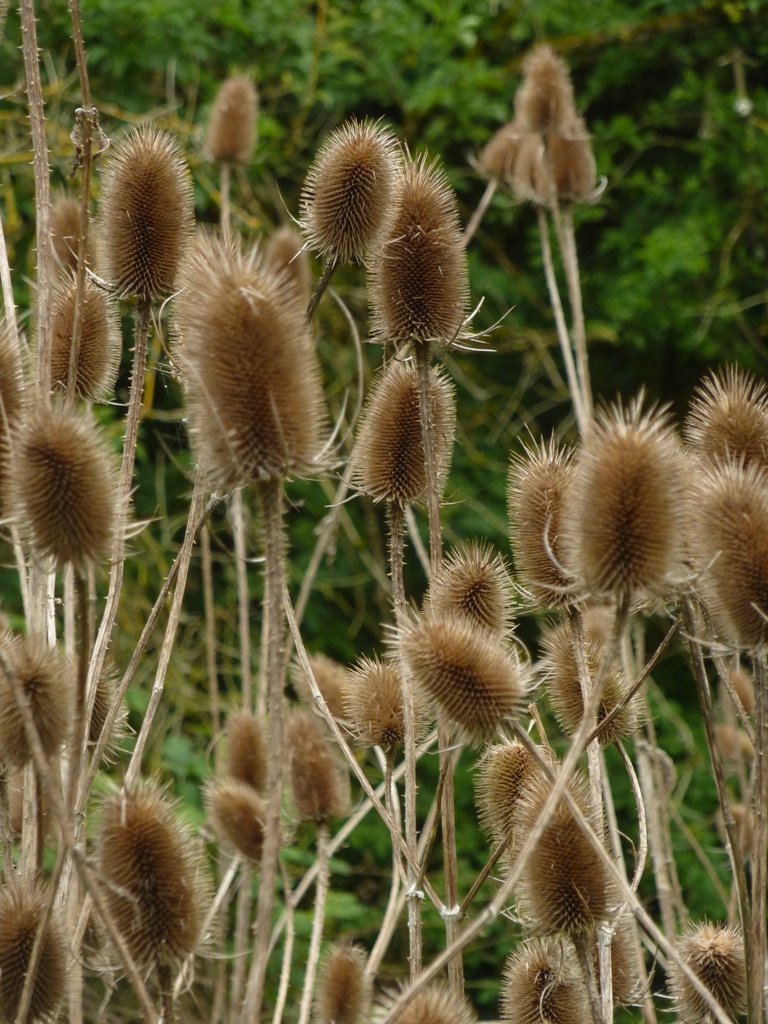
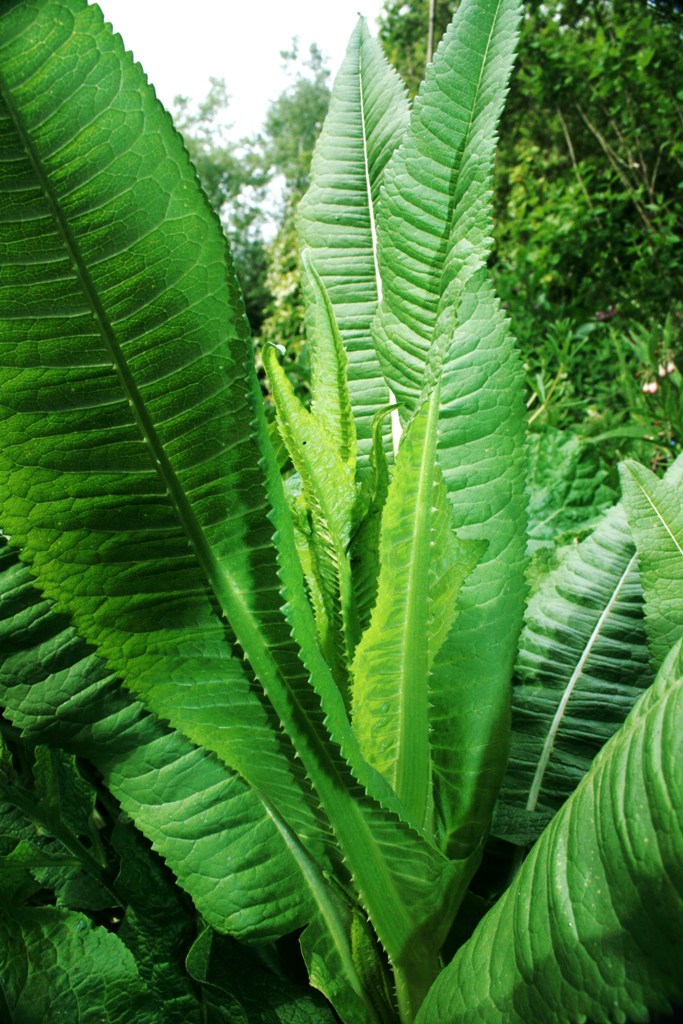
The first and best known of the family is a robust biennial herb, frequent in rough grassland, wood margins, thickets and hedgerows, and on roadsides and waste ground on a very wide range of soil types. It fruits prolifically, and often colonises bare ground after disturbance.
The genus name Dipsacus is derived from the word for thirst and refers to the cup-like formation made where sessile leaves merge at the stem. Rain water can collect in this receptacle; this may perform the function of preventing sap-sucking insects such as aphids from climbing the stem.
The flowers are extremely attractive to bees and butterflies, and the foliage is a magnet for aphids, which in turn attract ladybirds. If left to seed, the brown seedheads are a magnet for goldfinches.
Other Uses:
As it is a very attractive, architectural plant, it is occasionally grown as an ornamental garden plant, where it can look dramatic in the back of a large border.
The dried heads are very useful in floristry, especially dry flower arrangements and in my natural Christmas wreaths!
If you have just one plant then the following year you will have 100s! They are easily spotted and removed though!
This is an introduced and naturalized plant but still grown for fulling in Somerset. It is now a frequent casual weed from birdseed. (Stace)
Main Traditional Uses:
The Fuller’s Teasel was used in textile processing, providing a natural comb for cleaning, aligning and raising the nap on fabrics, particularly wool. It differs from the wild type in having stouter, somewhat recurved spines on the seed heads. The dried flower heads were attached to spindles, wheels, or cylinders, sometimes called teasel frames, to raise the nap on fabrics.
By the 20th century, teasels were largely replaced by metal cards, which could be made uniform and do not require constant replacement as the teasel heads wear.
However, some people who weave wool still prefer to use teasels for raising the nap, claiming that the result is better; in particular, if a teasel meets serious resistance in the fabric, it will break, whereas a metal tool would rip the cloth.
An infusion is said to strengthen the stomach, create an appetite, remove obstructions of the liver and treat jaundice. The root is harvested in early autumn and dried for later use. The plant has a folk history of use in the treatment of cancer, an ointment made from the roots is used to treat warts, wens and whitlows. A homeopathic remedy is made from the flowering plant. It is used in the treatment of skin diseases.
- The flower and dried fruit attract wildlife like the Wild Teasel does.
- A blue dye is obtained from the dried plant, an indigo substitute. It is water soluble. The colour is yellow when mixed with alum.
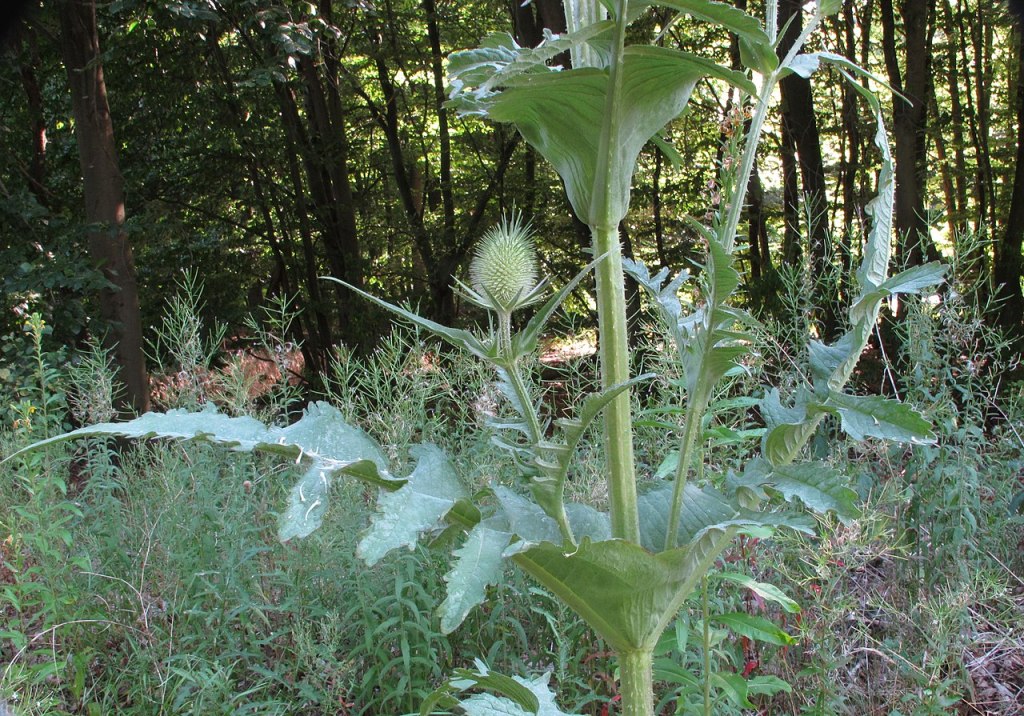
D. laciniatus or Cut-leaved Teasel
This introduced plant differs from D. fullonum in stems to 3 (4) m. with less stout prickles, leaves lobed more-or-less midway to midrib and corolla is pale pink. (Stace)
Uses are similar as with the Wild Teasel above.
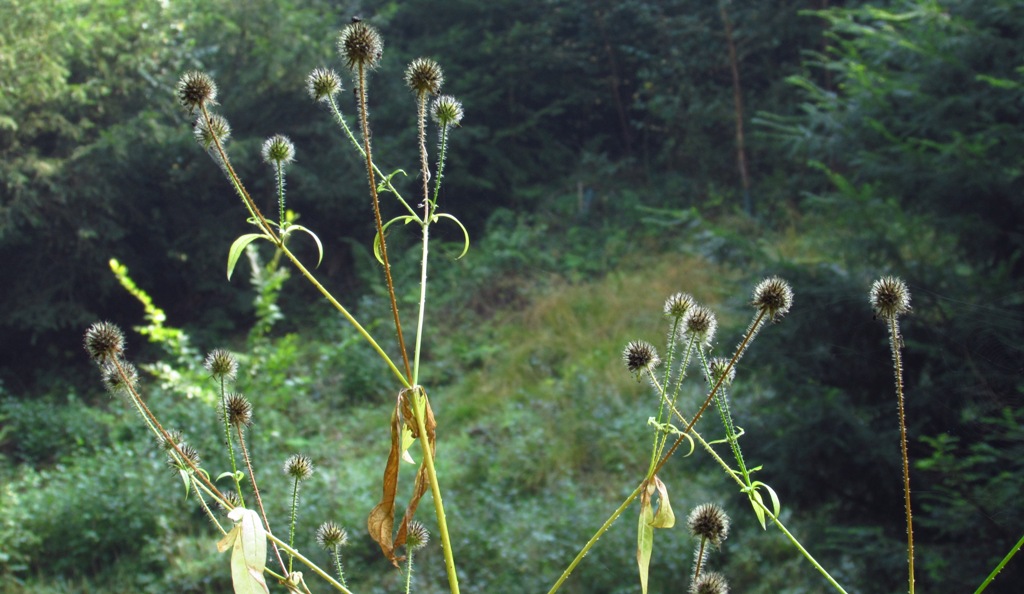

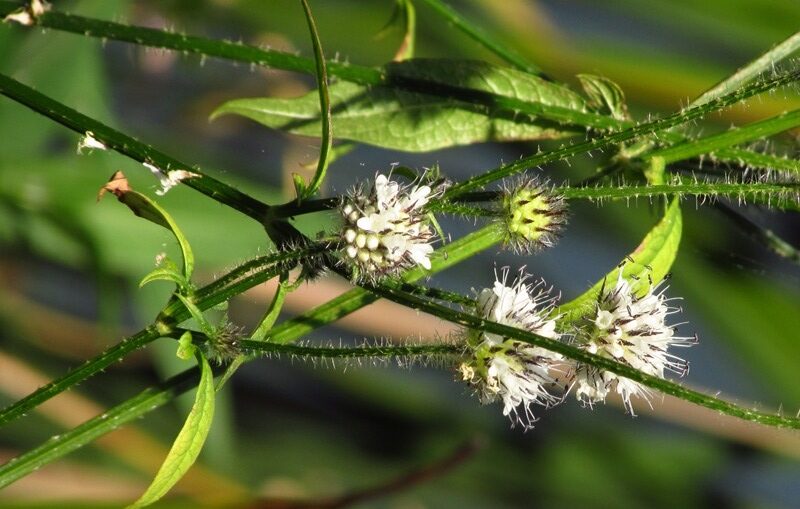
A biennial herb occurring locally on woodland edges, rides and in clearings, in scrub and hedgerows, on ditch-sides and stream and river banks. It also grows in quarries and on waste ground. It prefers damp, calcareous soils.
Uses are similar as with the Wild Teasel above.
D. strigosus or Yellow-flowered Teasel
A biennial herb naturalised in rough ground, chalk pits and waste places. It was introduced into cultivation in Britain in 1820. It was collected at Cherry Hinton (Cambs.) in 1828 and is still naturalised in this area. It may have originated from the Cambridge Botanic Garden.
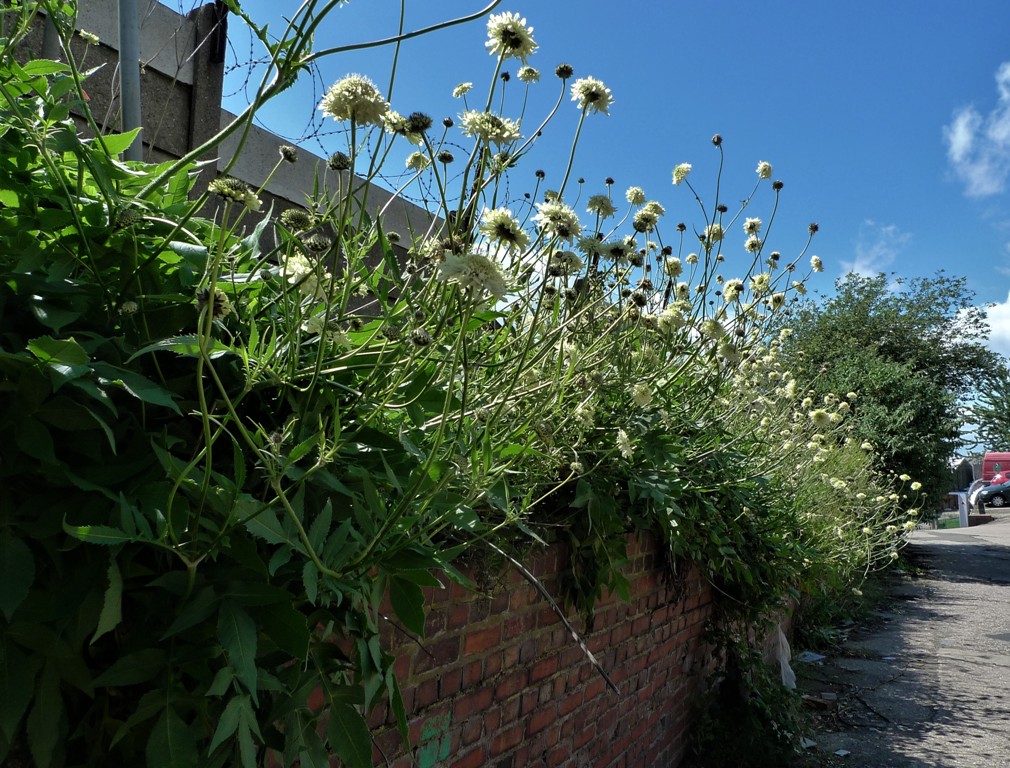
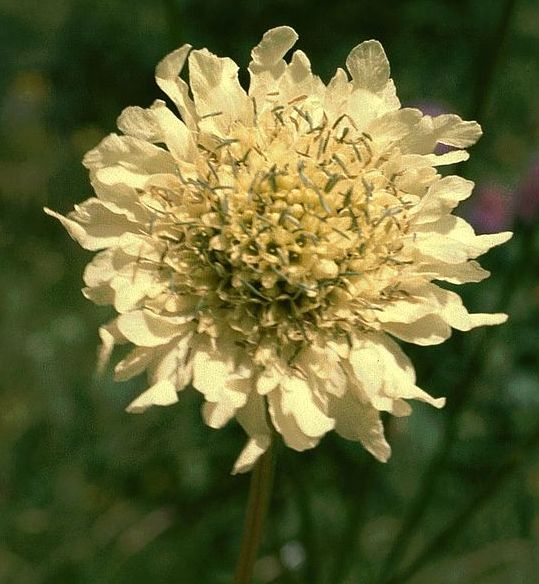
Cephalaria gigantia or Giant Scabious (Non native)
This is native to the Caucasus (Armenia, Georgia and Azerbaijan) and Turkey, but also cultivated as an ornamental. It self-seed readily apparently so no surprise it can be found in the wild!
It is a dramatic, yet informal, statement in the border, bearing stout, upright stems from which pale primrose-yellow scabious flowers attract a wealth of pollinators.
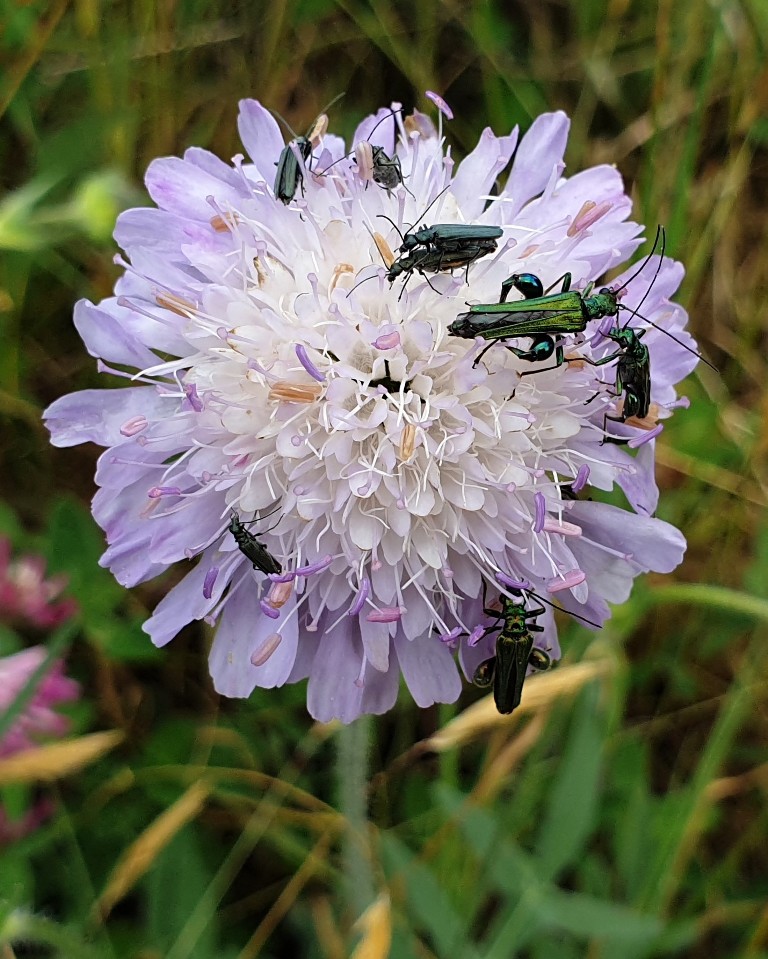
Knautia arvensis or Field Scabious
A perennial herb of calcareous and neutral grassland on well-drained, especially basic soils. It is found in chalk and limestone grassland, in rough pasture, open hedgerows and wood borders, and as a colonist on roadside verges, railway embankments and grassy waste ground. It is also a locally common weed of cultivation, especially in field-borders on the chalk.
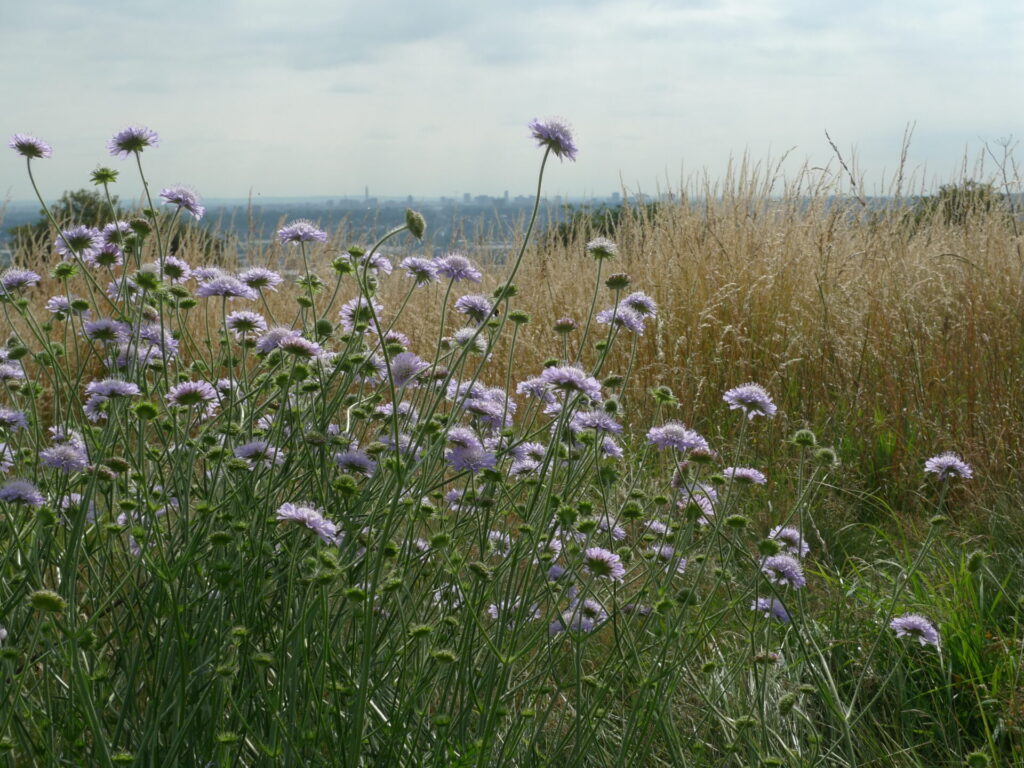
The genus Knautia is named after a 17th-century German botanist, Christian Knaut.
Species of scabious were used to treat scabies, and many other afflictions of the skin including sores caused by the bubonic plague. The word scabies comes from the Latin word scabere ‘scratch’.
Field scabious is an attractive wildflower, bearing pin-cushion-like flowers in the palest lilac, on tall, wiry stems. Perfect for the herbaceous border or a wildflower meadow, its blooms are adored by bees and butterflies. It also makes an excellent cut flower.
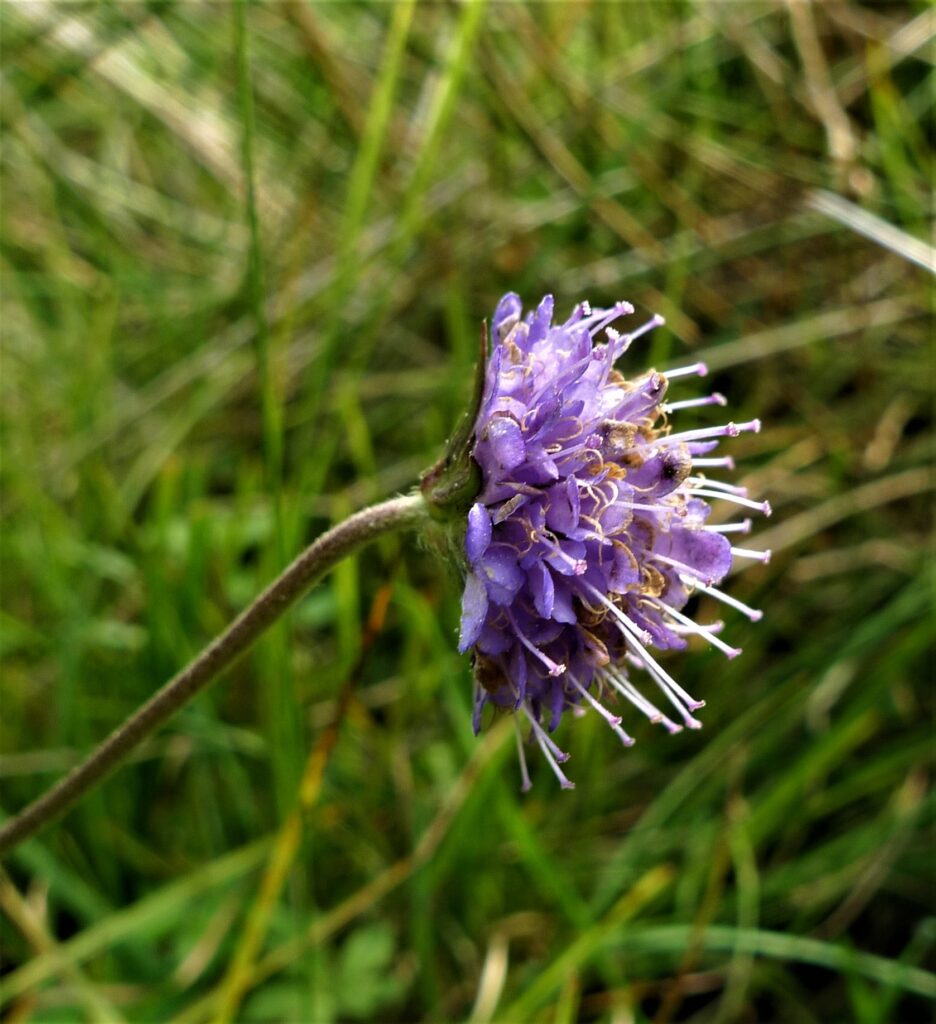
Succisa pratensis or Devil’s-bit Scabious
A perennial herb, growing in a wide range of moist to moderately free-draining habitats, and favouring mildly acidic soils. It occurs in woodland rides, in heathland and grassland and in mires, and in the uplands on cliff ledges and in ravines.
Species of scabious were used to treat scabies, and other afflictions of the skin including sores caused by the bubonic plague. The word scabies comes from the Latin word for “scratch” (scabere). The short black root was in folk tales bitten off by the devil, angry at the plant’s ability to cure these ailments, in anger against the Virgin Mary, or as part of some ‘devilish plot’. The Latin specific epithet pratensis literally means “of the meadow”.
Succisa pratensis is a good source of nectar. The flowers are visited by various types of insects, but especially frequently by hoverflies of the genus Eristalis. It is a good source of nectar and is the larval food plant of the marsh fritillary, the eggs of which are laid in groups on the underside of the plant, and the narrow-bordered bee hawk-moth (Hemaris tityus). As both invertebrates are rare, their survival relies on careful management of sites containing these plant and butterfly species.
It is parasitized by the chytrid fungus Synchytrium succisae
It is a pretty plant to grow in the garden.
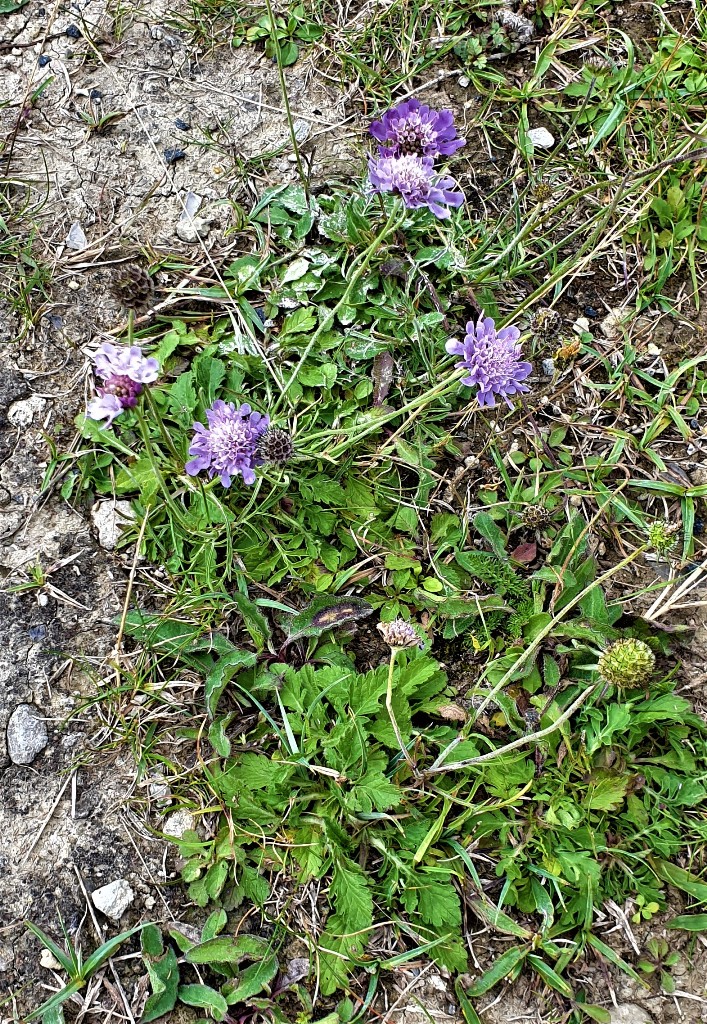
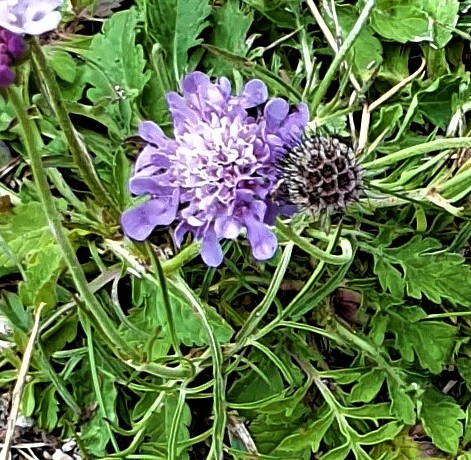
Scabiosa spp. or Scabiouses
Scabiosa columbaria or Small Scabious
A perennial herb, usually found on dry, relatively infertile soils. Habitats include calcareous pastures on downs, hill-slopes and banks, and it is occasionally found on cliffs and rock outcrops and in disused chalk and limestone quarries.
Small Scabious grows best in light, often nutrient-poor, calcareous soils, so makes a lovely addition to gravel gardens and sunny wildlife gardens – the flowers are especially popular with bees, butterflies and hoverflies. It also makes a great cut flower.
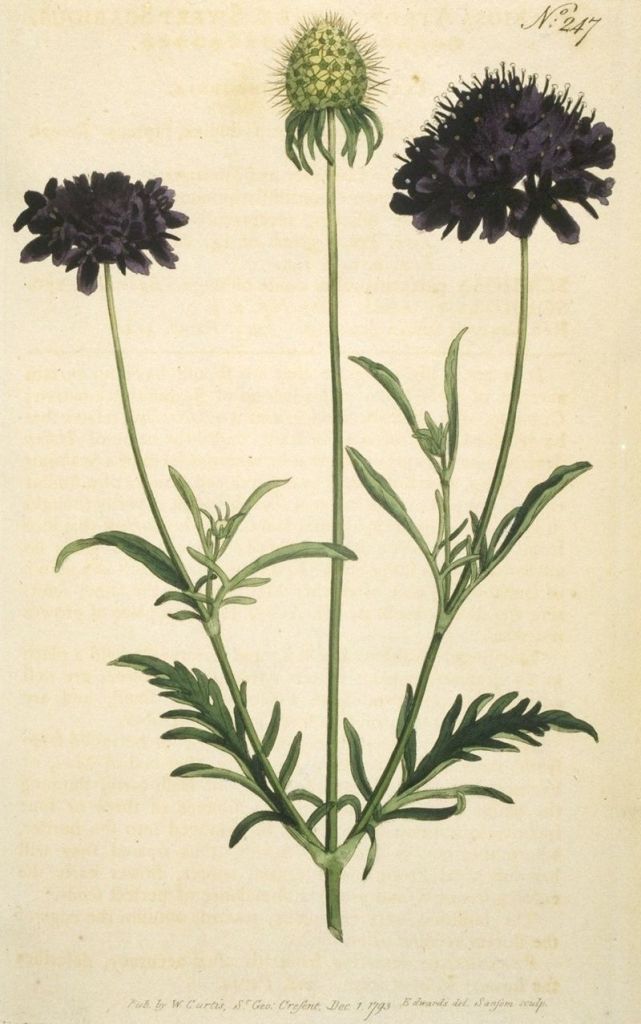
Scabiosa atropurpurea or Sweet Scabious
An annual to perennial herb, widely grown in gardens and naturalized on chalk cliffs and railway banks; it also occurs as a casual on refuse tips, roadsides and in waste places.
It is a pretty non-native (from Southern Europe) with erect, branching stems to 60cm in height and pincushion flowerheads to 5cm across, flowering from midsummer into the autumn. The very dark purple flowers appear almost black, have a delicate scent, and may be followed by bristly seedheads.
